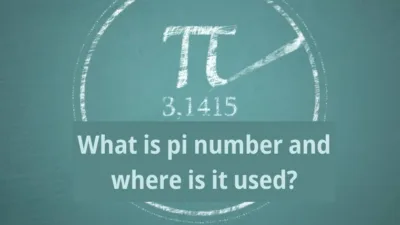Every day, you encounter a barrage of unwanted messages cluttering your inbox or spam filters—the notorious “spam.” But what is spam, really? Beyond the frustrating pile of unsolicited bulk messages that range from advertising pitches to phishing traps, lies an intricate backstory that goes beyond digital annoyance. The term “spam” took root in our vernacular from an amusing Monty Python sketch, only to be co-opted by the tech world following the first massive spam mailing in 1994. Today, this nuisance infiltrates emails, social networks, instant messaging, and even mobile apps, leading to not only clutter but also serious security risks.
As someone navigating the digital world, it is critical for you to understand spam meaning and its implications for your cyber safety. Through this article, you will explore the different forms spam can take and how spammers craft ingenious yet deceptive techniques to flood your digital space. From spoofed email addresses and pernicious malware to the legal and technical shields erected to mitigate its impact, uncover the complexities and costs associated with these ubiquitous, unwanted messages. Our journey through the concept of spam will arm you with knowledge and strategies to guard against this incessant digital challenge, enhancing your productivity and safeguarding your personal information.
What is Spam and Its Origins
When you hear the word “Spam,” your mind might immediately jump to those unwanted emails, but its origins are far more savory. The term “Spam” was coined long before the digital age, tracing back to a canned cooked meat product invented by Hormel Foods in 1937. This product, primarily made of ground pork and ham, became an iconic American food thanks to its versatility and shelf stability. Here’s how this humble canned meat became a global phenomenon:
- Humble Beginnings: The name “Spam” is thought to be either a contraction of “spiced ham” or an acronym for “Shoulder of Pork And Ham.” It was Ken Digneau, the brother of a Hormel executive, who won a naming contest and helped christen this now-famous product.
- War and Peace: Its popularity soared during the Great Depression and World War II. Why? Well, Spam was not just a high-protein meal; it was also easy to transport and had a long shelf life, making it an ideal staple for U.S. troops. Over 100 million cans were sent to the Pacific, and after the war, it remained a beloved item in regions where American soldiers had been stationed, becoming part of the local cuisine.
- Spam Goes Global: Today, Spam isn’t just an American classic; it’s a global star. It’s sold in over 100 countries and comes in 15 different varieties, including Classic, Teriyaki, and Jalapeño. The product has even been integrated into various cultural dishes, such as Spam musubi in Hawaii, which combines the canned meat with Japanese sushi techniques and ingredients, reflecting its widespread acceptance and versatility
Spam’s journey from a simple canned meat product to a cultural icon is a testament to its adaptability. The product’s name was eventually borrowed to describe unsolicited electronic messages, thanks to a Monty Python sketch where Spam was humorously depicted as unavoidable and repetitive. This sketch resonated so much that it gave birth to the spam meaning we know today in the digital world. As you navigate through your inbox, remember that Spam’s story is one of transformation, from a wartime necessity to a culinary staple, and now to a term that represents the digital age’s own brand of nuisance.
Conclusion
As we have delved into the concept of spam, we’ve uncovered its evolution from a quirky Monty Python reference to a pervasive element of our digital experience. We’ve explored its various incarnations, from a harmless canned product to the relentless waves of digital communication that challenge our cyber safety. By understanding the nature of spam and its consequences on our daily lives, one is better equipped to navigate the murky waters of unsolicited messages, strengthening our defenses against potential security risks.
The significance of spam extends beyond mere annoyance, impacting how we interact with technology and protect our personal information. Our insights into its origins and the strategies to combat it serve not only as a lesson in digital literacy but also as a call to remain vigilant and informed. As we continue to forge the path through our increasingly online world, let the knowledge of spam guide us towards a safer and more efficient digital future.
FAQs
You’ve probably got a few questions about spam, and you’re not alone. Here are some of the most frequently asked questions that can shed light on the spam meaning and how to deal with it:
- What exactly is spam?
Spam refers to unsolicited emails or newsgroup postings, often advertising a product or service. The term, which now signifies a digital inconvenience, was inspired by a canned meat product and popularized after its humorous depiction as unavoidable and repetitive in a Monty Python sketch. The first major instance of spam was orchestrated by two American lawyers in 1994, forever changing the way we view our inboxes. - How do spammers get my email address?
There are several ways your email address can fall into the hands of spammers:- Using software that automates the collection of emails.
- Buying mailing lists that may contain your information.
- Gleaning details from online transactions you’ve made.
- Employing web crawlers that scour the internet for email addresses.
- What is phishing and how can I protect myself?
Phishing is a malicious technique used to trick you into giving away sensitive information. It involves unsolicited emails that seem legitimate but contain dangerous links or attachments. To protect yourself:- Use email filters to screen incoming messages.
- Be cautious with links and attachments from unknown sources.
- Regularly review and verify web links for authenticity.
- Choose strong, unique passwords for your accounts.
- How can businesses reduce spam?
For businesses, spam can be a significant disruption. Here are some steps to keep it at bay:- Enable spam detection tools on your communication systems.
- Set up voice menus to filter out unwanted calls.
- Use a double opt-in system to confirm that people want to receive your communications.
- Avoid assuming consent to send promotional emails; always seek express permission from your recipients.
Remember, understanding what is spam and staying informed about spam meaning and prevention methods is your first line of defense in maintaining your digital security and sanity.









